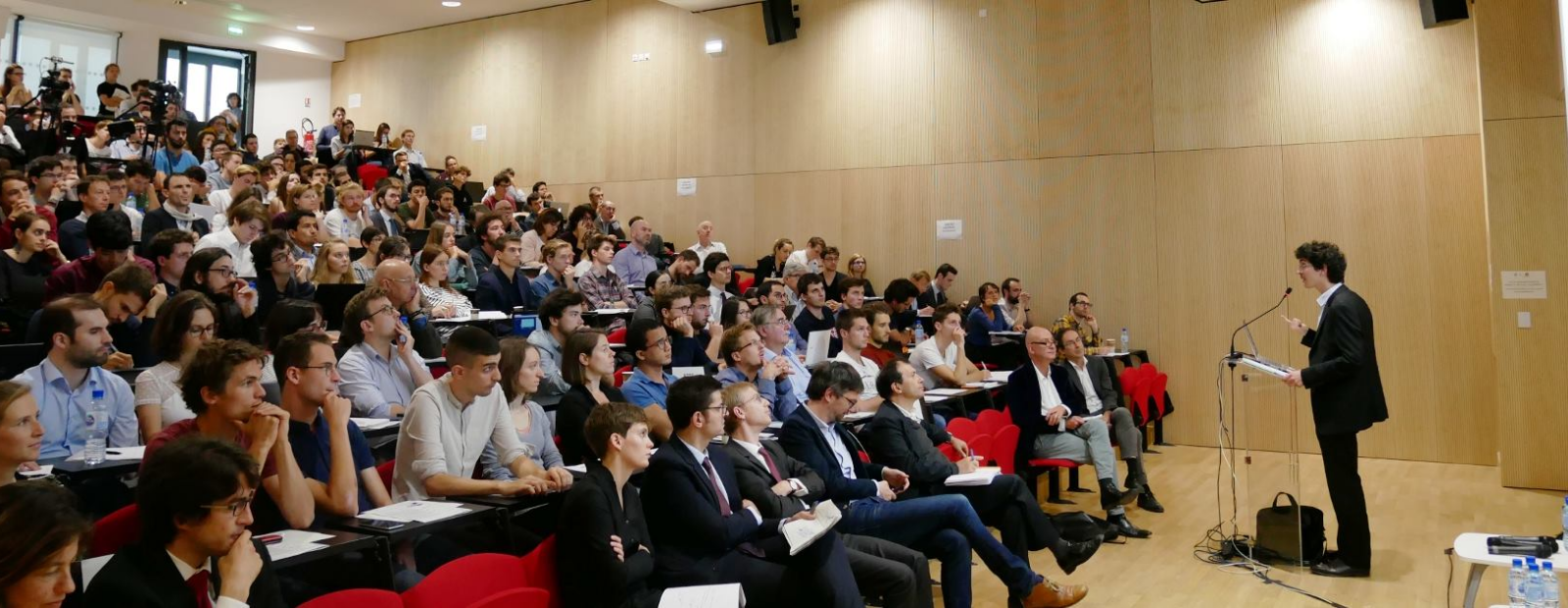Publié en
- Professeur émérite
- Université Paris 1 Panthéon-Sorbonne
- Chercheur associé à la Chaire Hospinnomics – Hospital | Innovation | Economics.
- Economie comportementale
- Santé
- Systèmes de santé
Adresse :48, Boulevard Jourdan,
75014 Paris, France
Publications HAL
-
Into the Far West? Investigating Health Policy-Makers’ Willingness to Adopt Decrementally Cost-Effective Innovations Using a DCE Approach Pré-publication, Document de travail
-
Impact of tariff refinement on the choice between scheduled C‐section and normal delivery: Evidence from France Article dans une revueRevue : Health Economics
Publié en
-
Multicentre, randomised, economic evaluation of a web-based interactive education platform, simple or enhanced, for patients with end-stage renal disease: the PIC-R trial protocol Article dans une revueAuteur : Clement De Chaisemartin Revue : BMJ Open
Publié en
-
Combined incentive actions, focusing on primary care professionals, to improve cervical cancer screening in women living in socioeconomically disadvantaged geographical areas: a study protocol of a hybrid cluster randomised effectiveness and implementation trial- RESISTE Article dans une revueAuteur : Amber Cripps Revue : BMJ Open
Publié en
-
Cost-effectiveness of strategies to control the spread of carbapenemase-producing Enterobacterales in hospitals: a modelling study Article dans une revueRevue : Antimicrobial Resistance and Infection Control
Publié en
Onglets
Professeur agrégé des Universités en sciences économiques, titulaire d’un Master en Sciences économiques et d’un Ph.D en économie de la santé de l’université de York (Royaume-Uni), Lise Rochaix a commencé sa carrière comme chargée de recherches au CNRS. Elle a enseigné comme maître de conférences à l’université de Paris-Dauphine, puis comme professeur à l’issue du concours d’agrégation du supérieur en Sciences économiques de 1994, à l’université de Bretagne Occidentale, puis à l’université d’Aix-Marseille II.
Ses travaux de recherche portent sur l’évaluation des politiques publiques, dans une approche comparative, tant internationale que sectorielle, avec un intérêt particulier pour la régulation, en termes d’efficience et d’équité, des systèmes de santé.
Elle a été chargée de mission sur la politique de santé à la Direction de la Prévision au Ministère des finances pendant trois ans (1990-1993) et a participé à cette occasion à l’élaboration du rapport Santé 2010 qui a préfiguré la constitution des Agences Régionales de Santé. Elle a été membre de la mission de concertation pour la rénovation des soins de ville lors du deuxième Grenelle de la santé (2002).
Elle a été nommée par le Président du Sénat en janvier 2006 au Collège de la Haute Autorité de Santé. Elle était en charge de la mission médico-économique de la HAS et présidait la Commission d’Evaluation Economique et de Santé Publique.
Depuis juin 2014, elle est membre de PSE et titulaire de la chaire hospinnomics créée par l’AP-HP et PSE.

